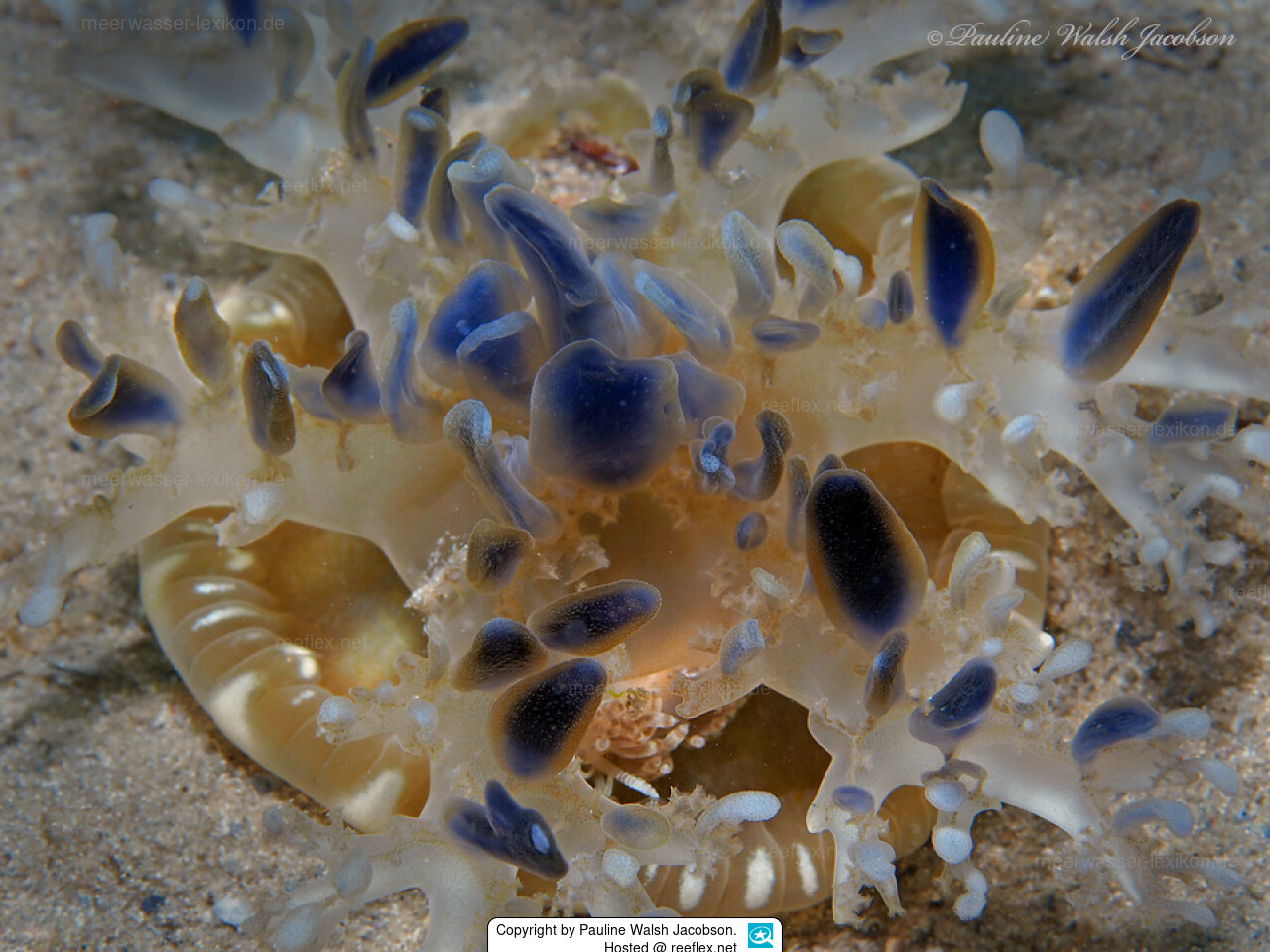Info
Dondice parguerensis Brandon & Cutress, 1985
Lives and feeds on the mangrove jellyfish Cassiopea frondosa and Cassiopea xamachana.
Dondice parguensis is one of the most fascinating nudibranchs in the Caribbean. This Dondice species was originally described from La Parguera, Puerto Rico (the common name means "from Parguera") and lives its entire life cycle in association with the mangrove jellyfish Cassiopea frondosa,
Like its host Cassiopeia, Dondice parguensis is found in very warm shallow water in mangroves.
In these magrove jellyfish (20-25 cm diameter), which live upside down on the muddy ground in the sunlit area of the mangrove swamp, Dondice parguerensis can be found including its long, thread-like egg masses that hang from the mouth tentacles of the jellyfish.
The original description by Marielle Brandon and Charles Cutress noted that this species is most common in Puerto Rico from September to February, but can be found year-round in calm waters down to 8 m (26 ft). The aeolid also occurs in the other upside-down species, Cassiopea xamachana.
This slug-slug association was considered “parasitic” because only the slug receives benefits from the relationship: food, shelter, and substrate. The jellyfish gets nothing out of the deal. The eggs are even laid directly on them and the planktotrophic larvae settle directly on the medusa.
Although Dondice parguensis is quite cryptically colored, it is relatively easy to find and photograph because of its specific food preference. The next time you see Cassiopea pulsating rhythmically on the ground, pick it up and take a close look at the jellyfish's mouth arms, or tentacles. The presence of the thin cream-colored egg thread is a sure indication that this bouquet of adult slug tentacles is somewhere. This is one of Mother Nature's truly interesting associations.
Lives and feeds on the mangrove jellyfish Cassiopea frondosa and Cassiopea xamachana.
Dondice parguensis is one of the most fascinating nudibranchs in the Caribbean. This Dondice species was originally described from La Parguera, Puerto Rico (the common name means "from Parguera") and lives its entire life cycle in association with the mangrove jellyfish Cassiopea frondosa,
Like its host Cassiopeia, Dondice parguensis is found in very warm shallow water in mangroves.
In these magrove jellyfish (20-25 cm diameter), which live upside down on the muddy ground in the sunlit area of the mangrove swamp, Dondice parguerensis can be found including its long, thread-like egg masses that hang from the mouth tentacles of the jellyfish.
The original description by Marielle Brandon and Charles Cutress noted that this species is most common in Puerto Rico from September to February, but can be found year-round in calm waters down to 8 m (26 ft). The aeolid also occurs in the other upside-down species, Cassiopea xamachana.
This slug-slug association was considered “parasitic” because only the slug receives benefits from the relationship: food, shelter, and substrate. The jellyfish gets nothing out of the deal. The eggs are even laid directly on them and the planktotrophic larvae settle directly on the medusa.
Although Dondice parguensis is quite cryptically colored, it is relatively easy to find and photograph because of its specific food preference. The next time you see Cassiopea pulsating rhythmically on the ground, pick it up and take a close look at the jellyfish's mouth arms, or tentacles. The presence of the thin cream-colored egg thread is a sure indication that this bouquet of adult slug tentacles is somewhere. This is one of Mother Nature's truly interesting associations.







 Pauline Walsh Jacobson, USA
Pauline Walsh Jacobson, USA




